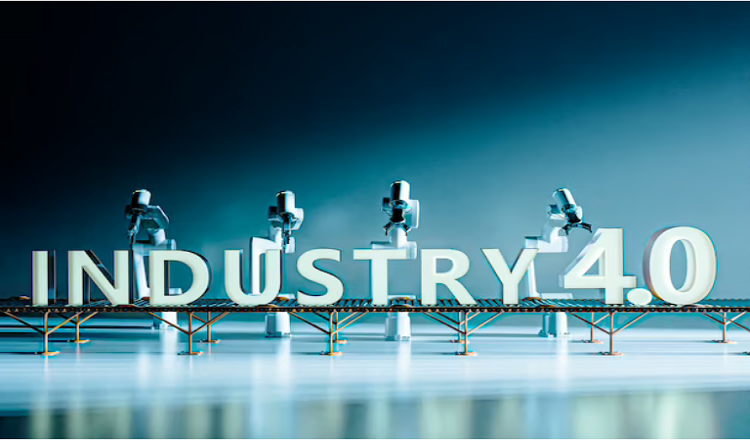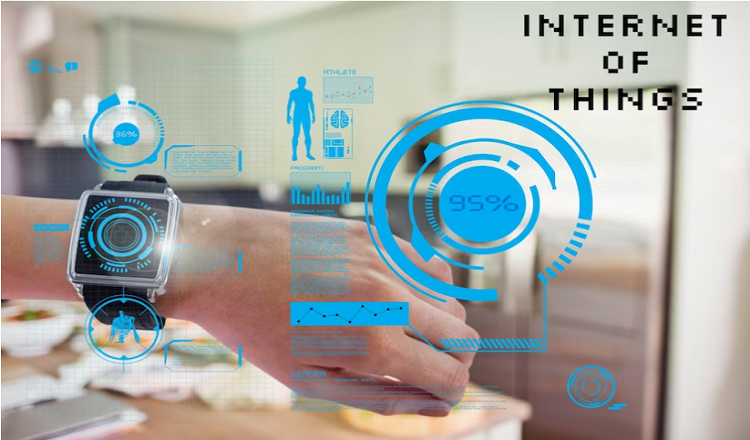Welcome to the age of Industry 4.0, where technology is revolutionizing the manufacturing industry like never before. This new era is characterized by the integration of cutting-edge digital technologies, such as artificial intelligence, robotics, and the Internet of Things (IoT), into manufacturing processes to create smart factories that can operate with maximum efficiency and productivity. It’s a time of great excitement and opportunity for manufacturers looking to stay ahead of the curve.
Of all the technologies driving the Fourth Industrial Revolution, IoT is one of the most transformative. IoT refers to the network of physical devices, vehicles, home appliances, and other items that are embedded with sensors, software, and connectivity, enabling them to collect and exchange data. In the context of manufacturing, IoT enables the creation of connected factories where machines and systems can communicate with one another in real-time, allowing for increased automation and optimization of production processes. With IoT, manufacturers can achieve new levels of efficiency, productivity, and agility in their operations, enabling them to respond more quickly to changes in customer demand and market conditions. So let’s dive deeper into the role of IoT in Industry 4.0 and explore how it is transforming the future of manufacturing.
Definition of IoT
Simply put, the Internet of Things (IoT) refers to the network of physical devices, vehicles, and other items that are embedded with sensors, software, and connectivity, enabling them to collect and exchange data. These devices can communicate with each other and with humans over the internet, creating a massive network of interconnected machines and systems.
In the context of manufacturing, IoT is transforming the way factories operate. Manufacturers are using IoT to gather real-time data on machines, production lines, and inventory, which allows them to optimize processes and minimize downtime. For example, predictive maintenance uses IoT sensors to monitor the performance of machines and predict when they will need maintenance, reducing the likelihood of unexpected downtime. IoT is also used in quality control, where sensors can detect defects in products and identify the root cause of the issue. Additionally, IoT can be used in supply chain management to track inventory and monitor the movement of goods, ensuring that products are delivered on time and in the right condition. By harnessing the power of IoT, manufacturers are able to achieve new levels of efficiency, productivity, and profitability.
Benefits of IoT in Manufacturing
The benefits of implementing IoT in manufacturing are numerous and significant. One of the most notable benefits is improved efficiency. By collecting real-time data on machines and processes, IoT allows manufacturers to identify bottlenecks and inefficiencies and optimize production processes. This leads to reduced downtime and faster production times. In addition, IoT can also help manufacturers reduce costs by enabling predictive maintenance, reducing waste and improving inventory management.
Increased productivity is another major benefit of IoT in manufacturing. By automating processes and providing real-time insights, IoT can help workers to be more productive and efficient. For example, workers can receive alerts on their mobile devices when a machine needs maintenance, allowing them to take action quickly and avoid costly downtime. Real-world examples of the benefits of IoT in manufacturing include General Electric, which uses IoT to optimize its supply chain and reduce inventory costs, and Bosch, which uses IoT to automate its production lines and reduce energy consumption. Overall, the benefits of IoT in manufacturing are significant, making it a critical technology for manufacturers looking to stay competitive in the Fourth Industrial Revolution.
Challenges and Risks of IoT in Manufacturing
While the benefits of IoT in manufacturing are significant, there are also several challenges and risks associated with its implementation. One of the main challenges is security, as IoT devices can be vulnerable to cyber attacks, which can result in data breaches or even physical damage to machines. Data privacy is also a concern, as the large amounts of data generated by IoT devices can be sensitive and require careful handling.
The cost of implementation is another significant challenge, as it can be expensive to retrofit existing machines with IoT sensors and infrastructure. There may also be a lack of skilled workers capable of implementing and maintaining IoT systems.
To address these challenges and mitigate risks, manufacturers must take a holistic approach to IoT implementation. This includes ensuring the security of devices and networks, investing in training and development for workers, and developing clear data privacy policies. In addition, manufacturers should carefully evaluate the costs and benefits of IoT implementation and prioritize areas where it can have the greatest impact. Ultimately, the benefits of IoT in manufacturing outweigh the risks and challenges, but it is important to address these concerns to ensure a successful and secure implementation.
Case Studies
There are many examples of manufacturing companies that have successfully implemented IoT in their operations. One such company is Bosch, which implemented IoT-enabled production lines and was able to reduce its energy consumption by 15%. Another example is Caterpillar, which used IoT to monitor the performance of its machines and provide predictive maintenance, reducing downtime by 70%.
These companies faced challenges during the implementation process, including the cost of retrofitting existing equipment and the need for skilled workers to manage the new IoT systems. However, they were able to overcome these challenges and achieve significant benefits, including increased efficiency, improved quality control, and reduced downtime. Other successful IoT implementations in manufacturing include General Electric’s use of IoT to optimize its supply chain and reduce inventory costs, and John Deere’s use of IoT to improve its manufacturing processes and reduce waste.
Future of IoT in Manufacturing
The future of IoT in manufacturing is promising, with emerging technologies set to continue transforming the industry. One technology that will play a significant role is 5G, which will enable faster and more reliable data transfer between devices and networks. This will make it possible to connect more devices and sensors in real-time, further increasing efficiency and productivity.
Artificial intelligence (AI) is another emerging technology that will shape the future of IoT in manufacturing. AI-powered predictive maintenance, quality control, and supply chain management will improve production processes, reduce downtime, and minimize waste.
Blockchain technology is also expected to have a significant impact on manufacturing, as it will provide a secure and transparent way to track supply chains and ensure product authenticity.
Overall, the future of IoT in manufacturing looks bright, with these emerging technologies and others set to continue transforming the industry and driving greater efficiency, productivity, and sustainability.
Conclusion
In conclusion, the implementation of IoT in manufacturing is crucial for companies to remain competitive in the Fourth Industrial Revolution. IoT enables manufacturers to collect and analyze data from their machines, products, and supply chains in real-time, leading to increased efficiency, reduced costs, and improved quality control.
Although there are challenges and risks associated with implementing IoT in manufacturing, such as security concerns and the cost of implementation, the benefits are significant. Real-world case studies have demonstrated that companies can achieve significant improvements in energy consumption, supply chain management, and predictive maintenance by adopting IoT-enabled solutions.
Furthermore, the future of IoT in manufacturing looks promising, with emerging technologies such as 5G, AI, and blockchain set to continue transforming the industry and driving greater efficiency, productivity, and sustainability.
In this rapidly evolving technological landscape, it is essential for manufacturers to embrace IoT and the opportunities it presents. Those that fail to do so risk falling behind their competitors and missing out on the benefits of this powerful technology




